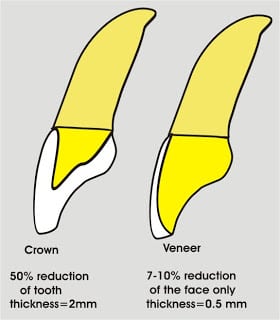In this article, we tackle the different biomechanical principles to prepare a tooth to receive a fixed prosthodontic restoration. In this five part article we start with preservation of tooth structure.
Tooth Preparation
Can Be defined as the mechnical treatment of a dental disease, condition or injury of the hard tooth structure that will lead to restoration of the effect tooth/teeth to the original form and function. The design preparation of a tooth are governed by five principles:
- Preservation of tooth structure.
- Retention and resistance.
- Structural durability of the restoration.
- Marginal integrity.
- Preservation of the periodontium.
Preservation of tooth structure
This principle doesn’t simply mean avoid excessive destruction of tooth structure but also concerns the importance of including and maintain the most possible and acceptable amount of remaining tooth structure into the design and doing the best to reinforce and protect them within the boundaries of the patient’s acceptance. The excessive removal of tooth structure can have many ill effect like:
- Unnecessary sacrifice of retention and resistance, as over-tapered or shortened tooth will affect the retention and resistance.
- Thermal hypersensitivity.
- Pulpal inflammation and necrosis
“ one of the most violation of this principle is seen in the indiscriminate use of full coverage porcelain crowns in situation where partial veneer coverage could be used, the decision to use full coverage should be reached only after a partial veneer crown has been considered and found wanting because of inadequate retention and aesthetics”
Sources
- Fundamentals of Fixed prosthodontics Herbert T., Shillingburg, Hobo, Whitself, Jacobi, and Brackett.
- Tylman’s theory and practice of fixed prosthodoontics. William F. P. Malone and David L. Koth.
- Originally Summarised by Dr. Hussam Othman Mutwalli.
- Minor Edit by Dr. Mohsen S. Ozaibi.
